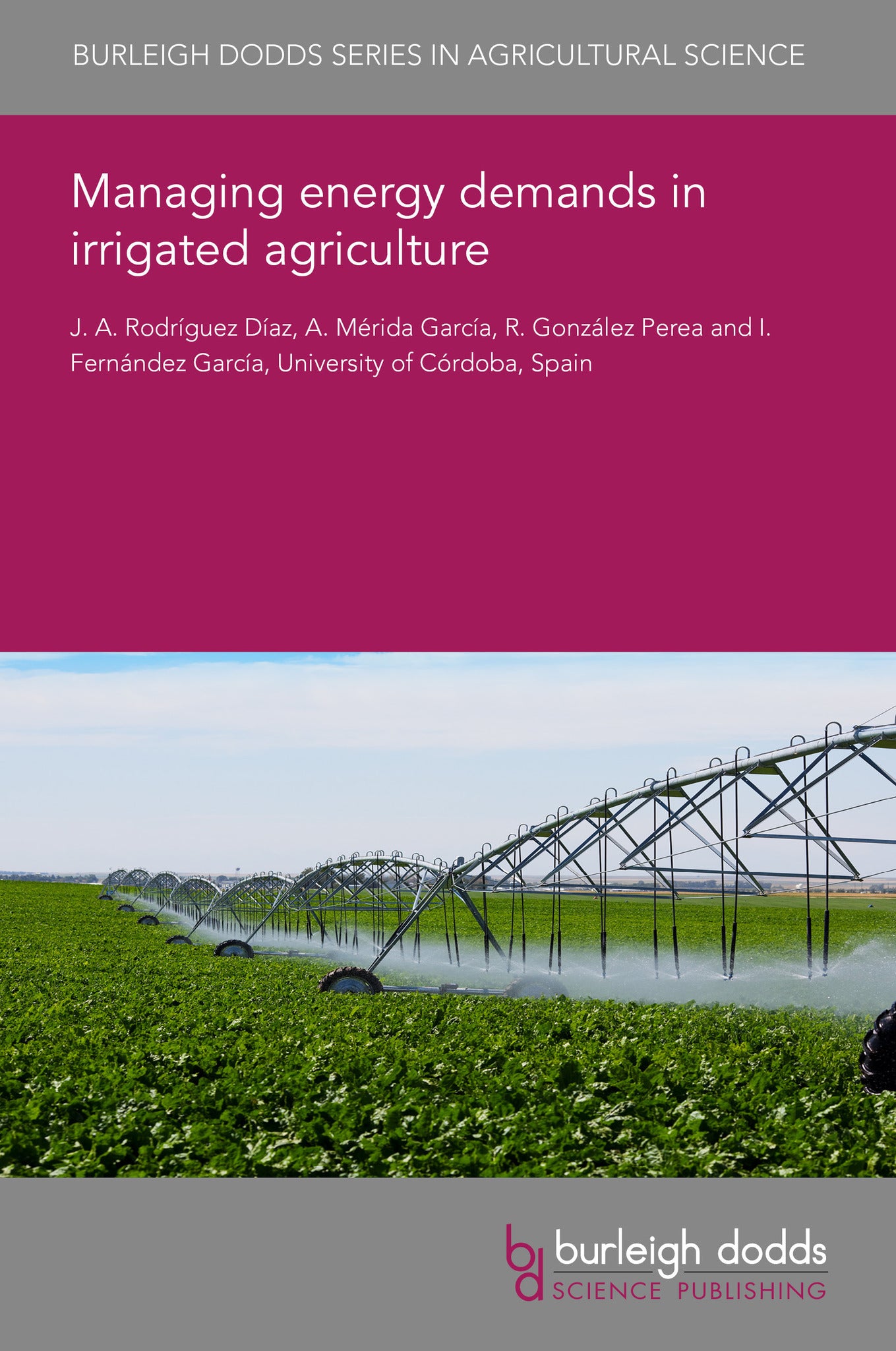We're sorry. An error has occurred
Please cancel or retry.
Managing energy demands in irrigated agriculture

Some error occured while loading the Quick View. Please close the Quick View and try reloading the page.
Couldn't load pickup availability
- Format:
-
10 June 2024

The modernisation of irrigation districts, where traditional networks based on open channels are replaced by pressurised pipe networks, represents a change in the delicate balance between water and energy use. In this way, water use efficiency is increased, but energy consumption is highly augmented. This fact implies a rise in water supply costs that, in many cases, can lead to a very significant reduction in farmers’ profits. This chapter addresses, on the one hand, measures to achieve energy savings in the water supply in pressurised networks of around 20–30%. These measures consist of alternative management strategies for the irrigation network and improvements in the hydraulic infrastructure. On the other hand, it highlights the potential role of renewable energies, including solar photovoltaic and micro-hydraulic energy, which can reduce energy costs and reduce the carbon footprint of agricultural production. All of these options are illustrated with reference to results obtained from Spanish case studies. Finally, new energy-saving measures can be developed based on deep learning from data. Thus, the roles of big data and artificial intelligence techniques that allow forecasting the demand at both irrigation district and plot scale are discussed. These measures will allow network management to be adapted to real operating situations, based on water demand forecasts, and will contribute to a more efficient use of water and energy resources.

TECHNOLOGY & ENGINEERING / Agriculture / Irrigation, Irrigation and water management, TECHNOLOGY & ENGINEERING / Agriculture / Agronomy / Crop Science, TECHNOLOGY & ENGINEERING / Agriculture / Sustainable Agriculture, TECHNOLOGY & ENGINEERING / Agriculture / Agronomy / Soil Science, Sustainable agriculture, Agricultural science, Agronomy and crop production

- 1 Introduction
- 2 Water and energy use in irrigated agriculture: modernisation impacts
- 3 Carbon footprint of irrigated agriculture
- 4 Factors determining energy demand
- 5 Measures to reduce energy dependency in irrigation distribution networks
- 6 Renewable energy sources
- 7 Future trends and the role of artificial intelligence
- 8 Conclusion
- 9 Where to look for further information
- 10 References



